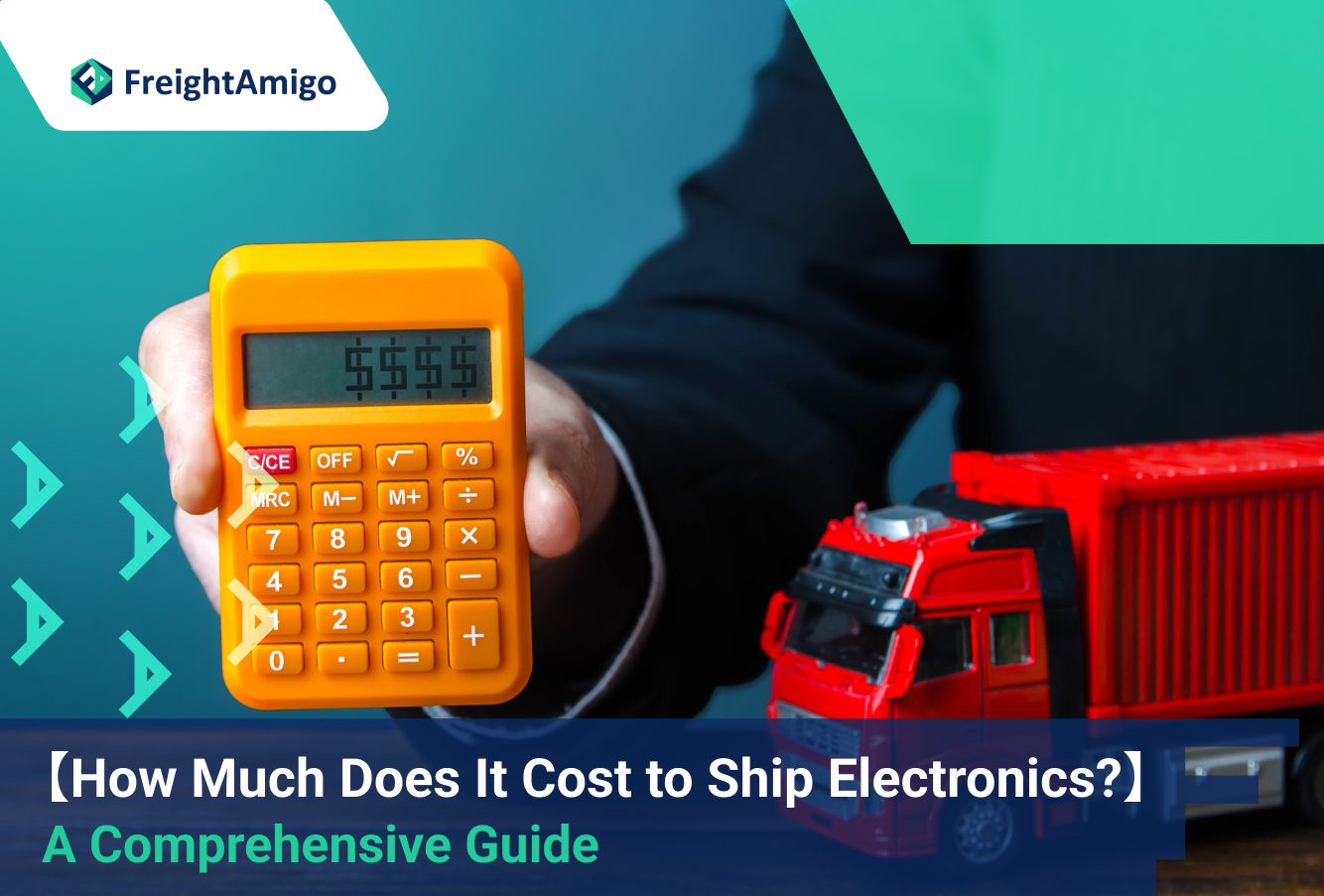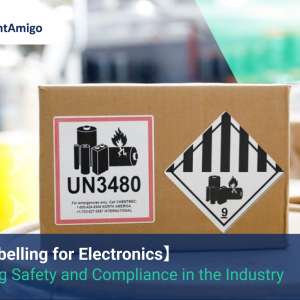19th January, 2024 Caspian Ng – Marketing Analyst at FreightAmigo
Introduction
Shipping electronics, such as computers, laptops, TVs, and gaming PCs, can be a nerve-wracking experience. These devices are not only fragile but also consist of delicate components that need to be protected during transit. In this comprehensive guide, we will explore the cost of shipping different types of electronics and the time it takes for them to reach their destination. We will also discuss various courier services and their rates for shipping electronics. By grasping the factors that affect electronic shipping costs, you can make informed decisions and save both time and money.
Want to compare the best Express, Air Freight, Sea Freight, Rail Freight & Trucking rates so as to have better control on cost?
Factors Affecting Shipping Cost
The cost of shipping electronics depends on several factors, including the weight of the package, the distance it needs to travel, the shipping method, and the courier service chosen. Additionally, the type of electronic device being shipped can also impact the cost due to its size, fragility, and value.
Shipping Methods and Courier Services
There are various shipping methods and courier services available for shipping electronics. Each service has its own rates and delivery times. Let’s explore some of the popular options:
1. UPS
UPS offers reliable shipping services for electronics. The cost of shipping lightweight electronics, such as laptops or small computer components, within your state may range from $25 to $100. Shipping these items across the country can cost between $40 and $150. For heavier electronics, like gaming PCs or large TVs, the rates can increase to anywhere from $100 to $500.
2. FedEx / TNT
FedEx and TNT are popular courier services for shipping electronics. The cost of shipping lightweight electronics within your state can range from $50 to $200. For long-distance shipping, the prices may exceed $200. These services offer reliable delivery and can provide you with a delivery quote before you send your electronics.
3. DHL
DHL offers both ground and air freight options for shipping electronics. The cost of shipping electronics with DHL from state to state is typically around $50. For heavier items, the cost may rise to $150 or more. Priority services are also available for faster delivery, but they come at a higher price.
How Long Does It Take to Ship Electronics?
The delivery time for shipping electronics depends on the distance and the courier service chosen. Standard packages for domestic shipments typically take about a week to reach their destination if the distance is within the country. However, opting for priority services can reduce the delivery time to only a day or two.
International shipments can take longer, depending on the destination and customs clearance processes. Shipping electronics from one state to another within the US may take around 2-5 business days, while international shipments can take anywhere from 5-10 business days or more.
Cost of Shipping Different Electronics
The cost of shipping electronics varies based on their weight, size, and value. Here’s an overview of the estimated costs for shipping different types of electronics:
- Lightweight Electronics (Under 10 lbs)
- Laptops: Shipping a laptop within your state may cost between $25 and $100. Shipping it across the country can range from $40 to $150.
- Computer Components: The cost of shipping small computer components, such as RAM or hard drives, within your state can be as low as $25. Shipping them across the country may cost between $40 and $100.
- Heavyweight Electronics (25-50 lbs)
- TVs: Shipping a TV within your state can range from $100 to $300. Shipping it across the country may cost between $150 and $500.
- Gaming PCs: The cost of shipping a gaming PC can be higher due to its size and weight. Prices may range from $200 to $500 or more, depending on the destination.
It’s important to note that these are estimated costs and can vary depending on the courier service, distance, and additional services requested, such as insurance or expedited shipping.
Additional Considerations for Safe Shipping
When shipping electronics, it’s crucial to take extra precautions to ensure the safety of the devices. Here are some tips for packing electronics securely:
- Remove detachable parts: Before packing, remove any detachable parts, such as cables, batteries, or accessories, and place them in a separate Ziploc bag.
- Wrap the main body: Wrap the main body of the device in several layers of bubble wrap to provide cushioning and protection. Use tape to secure the wrap in place.
- Use packing materials: Fill the shipping box with packing materials, such as foam peanuts or bubble wrap, to create a protective layer around the wrapped device.
- Secure smaller parts: If shipping smaller parts separately, use foam inserts or padding to prevent them from touching each other or sliding around during transit.
- Seal the box: Tape the shipping box using heavy-duty tape to ensure it remains securely closed throughout the shipping process.
By following these packing guidelines, you can minimize the risk of damage to your electronics during transit.
Tips for reducing electronic shipping costs
Reducing electronic shipping costs is a priority for many individuals and businesses. Here are some tips to help you minimize expenses while ensuring reliable delivery.
- Package Optimization: As mentioned earlier, optimizing your packaging can help reduce shipping costs. Use appropriately-sized boxes or envelopes and lightweight protective materials to minimize weight and dimensions.
- Negotiate Rates: If you regularly ship electronic items, consider negotiating rates with your chosen carrier. Depending on your shipping volume, carriers may be willing to offer discounted rates or customized pricing plans.
- Use Shipping Software: Shipping software can streamline the shipping process and help you find the most cost-effective shipping options. These tools often integrate with multiple carriers and provide real-time rate comparisons.
Conclusion
Shipping electronics requires careful consideration of the cost, time, and safety measures involved. Understanding the rates offered by different courier services and the estimated delivery times can help you choose the best option for shipping your specific electronic devices. Remember to properly pack your electronics to ensure they reach their destination safely. With this comprehensive guide, you can make informed decisions and ship your electronics with confidence.
There are different options for cargo transportation. If you want to choose the most convenient and suitable solution, it is best to have the full support of logistics experts! If you are planning to ship goods overseas, please go to the FreightAmigo page for inquiries.
===
Read More:
How to ship electronics: A Comprehensive Guide
Best Practices and Tips for a Secure Delivery
The Ultimate Guide to Packaging for Shipping Electronics
How to Safely Ship Your Precious Gaming PC
===
If you have any inquiries on logistics/supply chain, feel free to contact FreightAmigo now:
Chat with us online OR Hotline: +852 28121686 OR WhatsApp: +852 27467829



